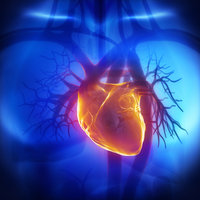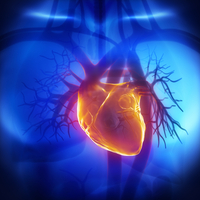

What is Homoarginine?
Homoarginine
is a non-essential cationic amino acid, which is formed from lysine and it is a
precursor of nitric oxide (NO). This
amino acid has been thought to be involved in increasing the availability of NO
which is the basis of its many roles including enhancing endothelial and myocardial
functions.In vitro and in vivo, Homoarginine shows characteristics similar to arginine. Epidemiological
investigations in two large independent cohorts, namely the German diabetes
dialysis (4D) study and the Ludwigshafen Risk and Cardiovascular Health
(LURIC) study have identified homoarginine as useful predictor of cardiovascular
events and mortality.
In other recent
studies, a correlation of increasing homoarginine levels to increasing age was
noted when observing healthy children and adolescents. This age-dependent increase in plasma
concentration is theorized that it is caused as a result of gradual maturation
of the pathways controlling homoarginine metabolism. Despite these results, homoarginine and
ornithine do not appear to be linked with carotid vascular structure in healthy
children and adolescents.
Beyond
cardiovascular implications, homoarginine concentrations have also been found
to be directly correlated with kidney function and are significantly associated
with the progression of chronic kidney disease (CKD). Low homoarginine
concentrations might be an early indicator of kidney failure and a potential
target for the prevention of disease progression but this theory needs further
exploration and investigation. The
results from Ravani et al. reveal that homoarginine could be a useful marker
for monitoring hemodialysis patients. In
fact, these results may provide the foundation and basis of designing such clinical
trials.
Why Measure Homoarginine?
Homoarginine
as described above has many roles and potential effects on various functions
and organs in the body as it has been demonstrated from numerous studies that
it has implications in endothelial, cardiovascular, and renal events. Other specific areas of research that
homoarginine metabolism have been linked to are ischemic strokes and pregnancy
pathologies such as preeclampsia.This analyte continues to be the focus of numerous studies and fields of
research.
Related Kits:
Homoarginine ELISA Assay kit
Cardiovascular Assay Kits
References:
- Choe, CU et al. “Homoarginine levels are regulated by
L-arginine: glycine amidinotransferase and affect outcome: results from
human and murine studies.” Circulation 2013; 128 (13): 1451-61. https://www.ncbi.nlm.nih.gov/pubmed/24004504 - Drechler, Christiane et al. “Homoarginine and
Progression of Chronic Kidney Disney: Results from the Mild to Moderate
Kidney Disease Study.” PLOS One 2013; DOI: 10.1371/journal.pone.0063560. https://www.plosone.org/article/info%3Adoi%2F10.1371%2Fjournal.pone.0063560#s1 - Jazwinska-Kozuba et al. “Opposite Associations of
Plasma Homoarginine and Ornithine with Arginine November 2013; 14,
21819-21832in Healthy Children and Adolescents”. International Journal of
Molecular Sciences. https://www.mdpi.com/1422-0067/14/11/21819 - Khalil, AA et al. “Asymmetric dimethylarginine,
arginine and Homoarginine at 11-13 weeks’ gestation and preeclampsia: a
case-control study.” Journal of Human Hypertension, 2013; 27, 38-43. https://www.readcube.com/articles/10.1038/jhh.2011.109 - Marz, Winfried et al. “Homoarginine, Cardiovascular
Risk, and Mortality.” Circulation , 2010; 112: 967-975. https://circ.ahajournals.org/content/122/10/967.long - Meinitzer, Andreas et al. “Homoargine: a new
cardiovascular risk marker in hemodialysis patients.” Journal of
Laboratory Medicine 2011; 35(3): 153-159. https://www.ncbi.nlm.nih.gov/pmc/articles/PMC3143829/ - Ravani, Pietro et al. “Homoarginine and Mortality in
Pre-Dialysis in Chronic Kidney Disease (CKD) Patients.”PLOS One 2013;
DOI: 10.1371/journal.pone.0072694.g003. https://www.plosone.org/article/info%3Adoi%2F10.1371%2Fjournal.pone.0072694

